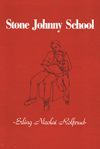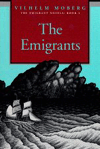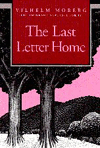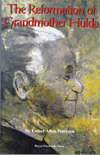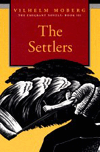-
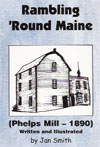
by Jan Smith
Paperback
This is a fictional look at the daily life of a homesteading family of five in the year 1890. Many of the characters, events, and places, however, allude to actual local people and happenings of that year. This story is set in the area around in the Phelps Mill, a successful flourmill ... ... moreby Jan Smith
Paperback
This is a fictional look at the daily life of a homesteading family of five in the year 1890. Many of the characters, events, and places, however, allude to actual local people and happenings of that year. This story is set in the area around in the Phelps Mill, a successful flourmill built in 1888-89, and now part of a county park established to save the mill as a symbol of the rural life. The main character is young, adventurous Nivek James who arrived by prairie schooner, lived first in a tent, then a sod house, and eventually a log home. Frequent visits to the mill, going to the store, and attending school all become his life's lessons, and form the text. This story has also been made into a stage play. -
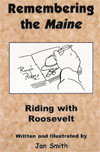
by Jan Smith
Paperback
This book continues Nivek's story in 1898. Leaving his family's homestead, Nivek becomes a newspaper correspondent during the Spanish-American War. Together with his boyhood friends, Wing, an Ojibwa Indian, and Jesse, from Medora, North Dakota, the young men travel across country by horseback, train, and stagecoach to join Theodore Roosevelt and the ... ... moreby Jan Smith
Paperback
This book continues Nivek's story in 1898. Leaving his family's homestead, Nivek becomes a newspaper correspondent during the Spanish-American War. Together with his boyhood friends, Wing, an Ojibwa Indian, and Jesse, from Medora, North Dakota, the young men travel across country by horseback, train, and stagecoach to join Theodore Roosevelt and the Rough Riders. The narrative — a coming-of-age tale of courage, hardship, and patriotism — is about their journey, the training of the troops, and the war in Cuba. Dispatcher Nivek wrote for the "Minnesota News" while he was a reporter for Roosevelt's Rough Riders and gave his personal account of that era. -
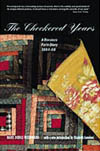
by Mary Dodge Woodward
Paperback
Mary Dodge Woodward, a fifty-six-year-old widow and Vermonter by birth, moved from Vermont to Wisconsin, and then — with her two grown sons and a daughter — to a 1280 to 1500-acre bonanza wheat farm in Dakota Territory's Red River Valley in 1882. Woodward had the house they lived in moved more ... ... moreby Mary Dodge Woodward
Paperback
Mary Dodge Woodward, a fifty-six-year-old widow and Vermonter by birth, moved from Vermont to Wisconsin, and then — with her two grown sons and a daughter — to a 1280 to 1500-acre bonanza wheat farm in Dakota Territory's Red River Valley in 1882. Woodward had the house they lived in moved more than 250 miles, from St. Paul, MN to today's West Fargo, ND area. Although their two sections of land were too small to be considered a true bonanza farm, the history that was documented on that farm gives readers their best insight into the bonanza farm lifestyle. For five years, from 1884 to 1889, Woodward recorded the yearly farm cycle of plowing and harvesting as well as the frustrations of gardening and raising chickens, the phenomenon of mirages on the plains, the awesome blizzard of 1888, her reliance on her family, and her close relationship with her daughter. This book, and its photographs, is a valuable record of a frontier woman's life, and an interesting firsthand account of farm life in the Red River Valley and of pioneer life in general. Following Woodward's death, her granddaughter compiled the diaries into this book, publishing it in 1937. In the last 25 years, the original house was moved from Mapleton Township to Bonanzaville USA, an outdoor museum in West Fargo, ND. -
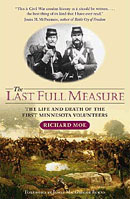
by Richard Moe
Paperback
Minnesota, the newest state in the Union, became the first to send volunteers to fight in the Civil War. That "first" perhaps marked the beginning of Minnesota's ongoing reputation as a very citizen-participatory state. In 1861, President Abraham Lincoln put out a call for troops. Shortly after that, MN Governor Ramsey volunteered 1,000 men ... ... moreby Richard Moe
Paperback
Minnesota, the newest state in the Union, became the first to send volunteers to fight in the Civil War. That "first" perhaps marked the beginning of Minnesota's ongoing reputation as a very citizen-participatory state. In 1861, President Abraham Lincoln put out a call for troops. Shortly after that, MN Governor Ramsey volunteered 1,000 men to defend the nation. Ramsey's plea was answered by 262 men, many new to MN or new to the US, and the First Minnesota Volunteer Infantry Regiment — comprised of farmers, loggers, clerks, teachers, students, and lawyers — was formed. The volunteers were young, mainly in their late teens to mid-twenties, and some had not had time to even become U.S. citizens yet. Of the 262, only 47 volunteers came home. In describing this book, Pulitzer Prize-winning Civil War author James McPherson wrote: "This is Civil War combat history as it should be written….the best thing of its kind that I have ever read." -

by Rhoda R. Gilman, Carolyn Gilman, and Deborah M. Stultz Paperback If you heard stories about your grandfather taking the oxcart to St. Cloud for supplies and being gone for two weeks, this book, recently re-issued by the Minnesota Historical Society Press, is for you. It traces the paths running through Minnesota, North Dakota and Canada that ... ... more
by Rhoda R. Gilman, Carolyn Gilman, and Deborah M. Stultz Paperback If you heard stories about your grandfather taking the oxcart to St. Cloud for supplies and being gone for two weeks, this book, recently re-issued by the Minnesota Historical Society Press, is for you. It traces the paths running through Minnesota, North Dakota and Canada that were used as international trade routes for furs and merchandise between St. Paul in the south and the settlement that was to become Winnipeg in the north. Supplemented with maps, sketches, a full index and reference notes, the book is divided into chapters featuring six main trails: Manitoba, North Dakota, Minnesota Valley, Woods, Middle and Metropolitan. "At the risk of sounding like a full-blown geek, this is about to become my favorite book. Maps for the Middle Trail even show my little hometown, right there, two weeks from St. Cloud...a trip that takes about an hour and a half today!" Suzann Nelson

